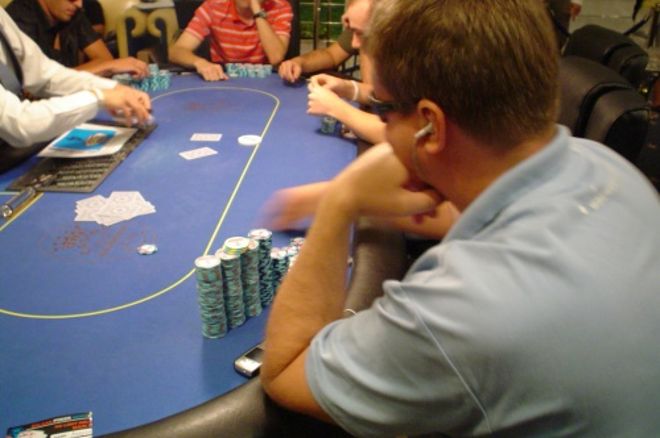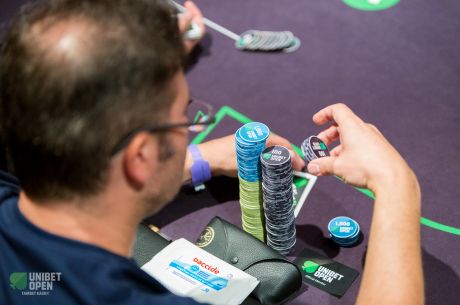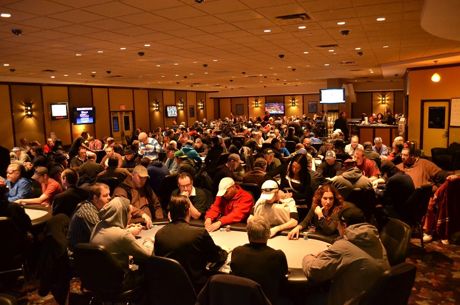Three Steps to Increasing Your Profit in Small Stakes Cash Games

Many people know me as the guy who has played millions and millions of hands at the very lowest stakes online. I have made tens of thousands of dollars in these games. I am talking about the 1c/2c, 2c/5c, and 5c/10c games in which many of you play.
Playing such a crazy amount of volume at these limits �� often versus some of the worst players on the planet �� has uniquely allowed me to understand what it takes to achieve maximum success against such players. In this article I am going to provide you with the three most important steps to increasing your profit in small stakes cash games.
Step 1: You Must Maximize Your Value
What do I mean by ��maximize your value?�� I mean that you get the absolute most out of your opponents when you have the best hand. Good hands don��t come around very often in poker, and one of the biggest mistakes that people make at these limits is slow playing or simply not betting enough when they do.
Maximizing value starts preflop. It is not necessary to get ��tricky�� when you wake up with hands like AxAx, KxKx, QxQx, JxJx or AxKx. I have achieved the most success in these low stakes games by just making the totally obvious play with premium hands before the flop, raising or reraising if the pot has already been opened.
The same thing goes for after the flop. Don��t get cute. If you have top pair, an overpair, two pair, trips, a flush, a straight... just bet the thing! Depending on the strength of your hand and how the board runs out, you can sometimes opt to check back a turn or a river for pot control. But your primary goal should be to get the absolute maximum value when you have these hands.
If there is one thing most players at these stakes love to do, it is to call. You have to give them the opportunity to do exactly that. You do that by betting and raising.
Step 2: You Must Make The Right Folds
The old saying that ��a penny saved is a penny earned�� is very true in poker. Minimizing your losses when you have the second-best hand is just as important as maximizing your value when you have the best hand. You do this by understanding the player type that you are up against and learning to respect your opponents�� bets more at these stakes.
Recognizing player types is very important, because often these days you will encounter a lot of extremely tight regulars at these limits who are simply auto-piloting on a dozen tables or more. When players like this start barreling you or raising you �� especially on the big money streets (turn and river) �� this is almost always a sure sign that they have a big hand. Believe me, they didn��t just decide to pick on you out of the blue.
And really, this is more or less going to be the case with most players at these limits. If there is one unifying characteristic about the majority of players at the lower stakes, it is passive play. Players at higher limits are much more aggressive and capable of running sophisticated bluffs.
If you are incapable of folding any hand at the lower stakes, you will pick off a few bluffs for sure. However, you will lose much more often to a better hand. Most of the time when players at these limits start getting really aggressive, they have exactly what they are representing (i.e., something better than you).
Learn to make ��sick folds�� versus the tight regulars, especially when they raise you on the turn or the river. Your AxAx or KxKx is just one pair and it is probably not the best hand anymore. Nearly all players at these stakes are uncreative and basically give away the strength of their hand by their actions. The ability to make disciplined folds when it is obvious that you are beat is one of the biggest keys to your success at these stakes.
Step 3: You Must Not Tilt
Controlling your emotions might be the most important step overall in small stakes cash games. Tilt is an absolute killer of bankrolls and dreams at these limits.
When you are playing against a lot of bad players who like to call, you are going to get beat more often in some crazy ways. They occasionally will hit some ridiculous two pair on the river to beat you �� this is just a simple reality.
It goes both ways, though. Basic math tells us that most of the time they will miss hitting their ridiculous two pair. This is why I stressed above the importance of getting the maximum value out of them when you have the best of it.
Poker is a stressful game with an endless amount of ups and downs, even at the best of times. The lowest stakes games are well known for taking the crazy factor to a whole new level. You have to be prepared for this and ready to keep your wits about you on days when things are not going your way.
If you feel your temperature rising and your frustration growing, then it is imperative you have a quitting strategy in place as well. For many people a ��stop loss�� might be useful. This means that if you are down five buy-ins (for example), then you absolutely must quit for that day no matter what.
On my blog I recently shared my top 15 mental tips at the micros. This list might give you a few more pointers for how to keep your cool at these stakes when adversity strikes.
The bottom line is that tilt is the number one enemy for most people at these limits. Things will go bad sometimes in poker and it will always be this way. If you lose your patience and start throwing away money by making bad plays and bad calls (no matter how small the stakes), this will add up in a big way in the long term.
Most people have no idea how massive the long run impact on their win rate can be from poor decisions influenced by emotion and tilt. As long as you are human, you can never eliminate this completely. But if you want to win big at the lowest stakes, then you absolutely have to learn to be better than most at keeping your cool when things go south.
Final Thoughts
Huge success at the very lowest stakes (whether online or live) isn��t some big mystery. It is really still mostly all about the basics. Get the most out of your value hands, lose the least with your second-best hands, and don��t allow emotions to affect you negatively as happens to so many when the bad side of variance shows up.
I often visualize success at these stakes as though I am in the middle of the ocean without a life jacket. The key most of the time is just to keep your head above water, then get the most you can when your big hands come along. Most people struggle, though, drowning themselves and all of their profits through tilt, ego, and an inability to find the fold button.
Nathan ��BlackRain79�� Williams is the author of the popular micro stakes strategy books, Crushing the Microstakes and Modern Small Stakes. He also blogs regularly about all things related to the micros over at www.blackrain79.com.
Want to stay atop all the latest in the poker world? If so, make sure to get PokerNews updates on your social media outlets. Follow us on Twitter and find us on both Facebook and Google+!









